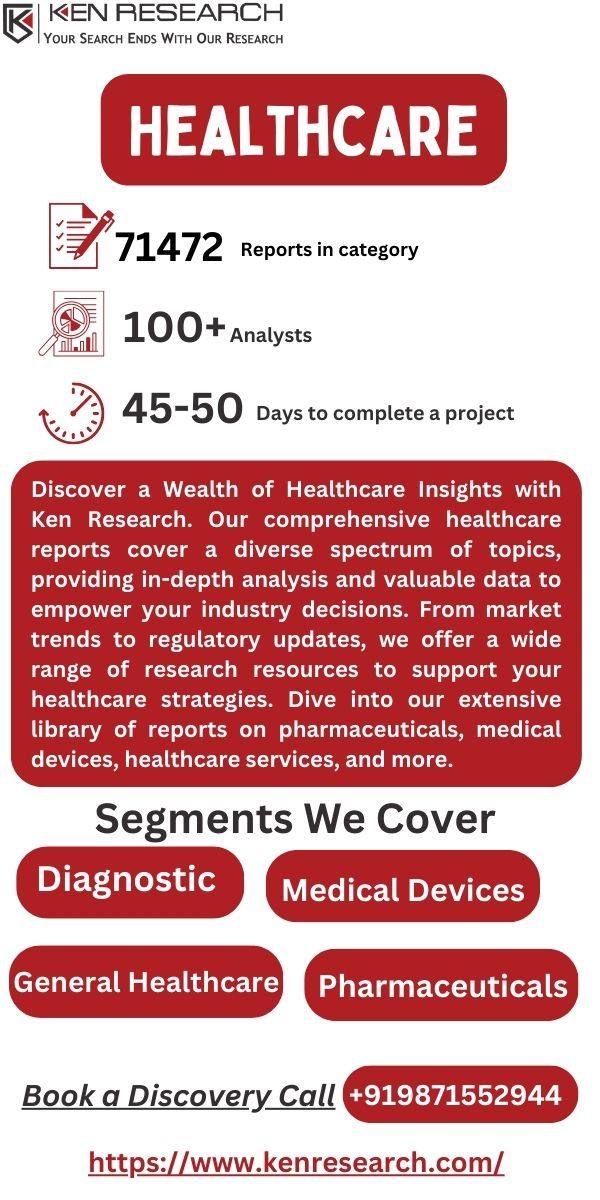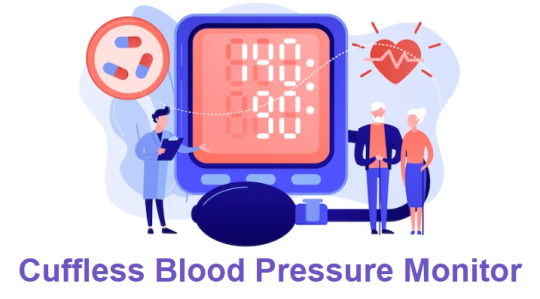#Healthcare market
Explore tagged Tumblr posts
Text
Healthcare Industry in India | UJA Market Report
The Indian healthcare sector is one of the largest sectors in terms of both revenue and employment.
The Indian healthcare industry is experiencing remarkable growth, with private equity and venture capital investments exceeding INR 84.3 billion in the first five months of 2024 alone, reflecting a 220% increase compared to the previous year.
The hospital industry in India accounts for 80% of the total healthcare market.
With a compound annual growth rate (CAGR) exceeding 8%, India’s hospital industry is projected to reach INR 16,315.6 billion by 2032.
#largest sectors#healthcare industry#healthcare sectors#healthcare market#hospital sector#Medical Tourism#Ayushman Bharat Yojana#health insurance sector#Pradhan Mantri Swasthya Suraksha Yojana#uja global advisory#uj
0 notes
Text
Point-of-Care Diagnostics Market: A New Era in Quick Healthcare Solutions

The Point-of-Care (POC) diagnostics market is on the rise, fueled by the growing need for rapid and convenient healthcare solutions. POC testing delivers accurate results for conditions like diabetes and infections directly to patients, minimizing the need for centralized lab testing. This advancement not only enhances patient care but also contributes to the efficiency of global healthcare systems. For deeper insights into this transformative market, visit Wissen Research's analysis here.
#Point of Care testing#point of care diagnostics#Medical devices report#Healthcare market#Wissen Research
0 notes
Text
0 notes
Text
How Medicare Supplement Companies Are Changing The Healthcare Market?

Medicare Supplement companies, also known as Medigap insurers, are significantly transforming the healthcare market in several key ways. These changes are largely driven by demographic shifts, regulatory changes, technological advancements, and evolving consumer preferences.
Expanding Access and Affordability: Medicare Supplement plans are designed to fill the gaps in coverage left by Original Medicare (Parts A and B), such as copayments, coinsurance, and deductibles. By offering these plans, companies help reduce out-of-pocket costs for beneficiaries, making healthcare more accessible and affordable for millions of seniors. This financial security allows more individuals to seek necessary medical care without the fear of overwhelming expenses, promoting overall better health outcomes.
Increasing Competition and Innovation: The rise of Medicare Supplement companies has intensified competition in the healthcare market. To attract and retain customers, these companies are continuously innovating. This includes offering additional benefits beyond the standard Medigap plans, such as vision, dental, and hearing care, wellness programs, and even gym memberships. These enhancements not only make their plans more attractive but also encourage preventative care and healthier lifestyles among seniors.
Enhancing Customer Experience through Technology: Technological advancements have enabled Medicare Supplement companies to significantly enhance the customer experience. Many insurers are investing in digital tools and platforms that simplify plan selection, enrollment, and management. Online portals and mobile apps allow beneficiaries to easily compare plans, access policy information, file claims, and contact customer service. Additionally, telemedicine services have become more prevalent, providing convenient access to healthcare professionals without the need for in-person visits. These innovations improve efficiency, reduce administrative burdens, and offer greater convenience to policyholders.
Responding to Regulatory Changes: Medicare Supplement companies must navigate a complex and evolving regulatory landscape. Recent regulatory changes, such as the phasing out of Plans C and F for new enrollees as of 2020, have prompted insurers to adapt their offerings. Companies are developing new plans and adjusting existing ones to comply with regulations while still meeting consumer needs. This adaptability ensures that they remain competitive and compliant, thereby sustaining their market presence.
Promoting Preventive Care and Chronic Disease Management: Medicare Supplement plans increasingly emphasize preventive care and chronic disease management. Insurers are incorporating benefits that encourage regular health screenings, vaccinations, and routine check-ups. Chronic disease management programs, which provide support for conditions like diabetes, hypertension, and heart disease, are also becoming more common. By focusing on prevention and early intervention, these programs help reduce hospital admissions and long-term healthcare costs, leading to better health outcomes for beneficiaries.
Addressing Diverse Needs and Preferences: The diversity of the senior population requires Medicare Supplement companies to offer a variety of plans that cater to different health needs and financial situations. This customization includes plans with varying levels of coverage and premiums, enabling beneficiaries to choose options that best fit their circumstances. Insurers are also focusing on underserved communities, ensuring that all seniors, regardless of their background or location, have access to supplemental coverage.
Medicare Supplement companies are playing a crucial role in shaping the future of healthcare for seniors. By enhancing access and affordability, driving competition and innovation, leveraging technology, adapting to regulatory changes, promoting preventive care, and addressing diverse needs, these companies are not only transforming the market but also significantly improving the healthcare experience and outcomes for millions of beneficiaries. Their continued evolution will be essential in meeting the growing and changing demands of an aging population.
0 notes
Text
Suction Catheters Market Forecast: A Holistic Approach to Market Trends
The global suction catheters market size is expected to reach USD 844.1 million by 2030, based on a new report by Grand View Research, Inc. The market is expected to expand at a CAGR of 8.2% from 2022 to 2030. Suction catheters help in clearing the respiratory tract of ventilator-dependent patients or patients suffering from respiratory disorders. The rise in the number of people suffering from chronic respiratory illness is proliferating the demand for suction catheters. For instance, as per the Irish Thoracic Society, in 2016, there were 643,580 inpatient hospitalizations in Ireland. Out of which, 32% of inpatients were older than 65 years and over. Respiratory diseases accounted for 19.1% of inpatient hospitalizations in Ireland.

Suction Catheters Market Report Highlights
Based on type, the closed suction catheter segment dominated the market in terms of revenue share in 2021. Further, the closed suction catheter segment is expected to witness the fastest growth rate of 8.8% over the forecast period, owing to a rise in cases of cross-contamination
Based on material, the latex-free segment dominated the market with a share of 69.7% in 2021, owing to the increased use of silicon-based catheters by healthcare professionals. Further, the latex-free segment is expected to grow at the fastest CAGR of over 8.8% during the forecast period
Based on end use, the hospital segment held the majority of the market share in terms of revenue in 2021. On the other hand, the ambulatory care centers segment is expected to witness the fastest growth of 10.9% during the forecast period
In 2021, North America dominated the market with a share of around 45% owing to the rising prevalence of various types of chronic diseases and the growing demand for respiratory devices. The Asia Pacific suction catheters market is expected to expand at the fastest rate of 8.6% during the forecast period. The growth can be attributed to the rise in the aging population and the increasing prevalence of chronic diseases
For More Details or Sample Copy please visit link @: Suction Catheters Market Report
The Covid-19 pandemic has highlighted the importance of respiratory medical devices owing to the rise in the number of ventilator-supported patients during the pandemic. In addition, factors such as rising cases of chronic diseases, and an increase in pollution levels are also contributing to heightened demand for suction catheters. In March 2020, U.S. Food and Drug Administration (FDA), granted emergency approval for Vesper, a device developed by Prisma Health that supports patients on ventilators.
In addition, during the pandemic, several governments across the globe and healthcare companies were improving medical treatment to treat patients suffering from Covid-19 patients. This in turn increased the use of catheters in emergency clinics and hospitals during the pandemic thereby positively impacting the demand for suction catheters. The rise in investments by the government and players to improve the healthcare industry is also boosting the demand for suction catheters. For instance, as per UK Government, close to 10,000 ventilators were added to the stock. Additionally, Rolls Royce, Ford, and Honda in the UK started manufacturing ventilators to cope with the increasing demand due to the COVID-19 outbreak.
#Suction Catheters#Medical Devices#Healthcare Tech#Respiratory Care#Medical Equipment#Healthcare Industry#Market Analysis#Medical Innovation#Health Tech#Critical Care#Suction Devices#Medical Supplies#Market Research#Healthcare Market#Respiratory Therapy#Medical Instruments#Healthcare Trends#MedTech#Hospital Supplies#Infection Prevention#Patient Care#Medical Consumables#Healthcare Report#Market Trends#Global Healthcare
0 notes
Text

Discover a Wealth of Healthcare Insights with Ken Research. Our comprehensive healthcare reports cover a diverse spectrum of topics, providing in-depth analysis and valuable data to empower your industry decisions. From market trends to regulatory updates, we offer a wide range of research resources to support your healthcare strategies. Dive into our extensive library of reports on pharmaceuticals, medical devices, healthcare services, and more. With Ken Research, you'll find the information you need to stay informed, make informed decisions, and navigate the ever-evolving landscape of the healthcare sector. Explore our healthcare reports now!
0 notes
Text
What is Digital Engineering and why is it important in Healthcare Industry?

The healthcare industry is witnessing a significant transformation due to the adoption of digital engineering services. Digital engineering refers to the use of computer-based technologies to design, simulate, and optimise products and systems. In healthcare, digital engineering enables the creation of new medical devices, the improvement of existing ones, and the development of innovative healthcare delivery systems. Digital engineering companies are playing a pivotal role in bringing these technologies to the healthcare industry.
Digital engineering services include a range of capabilities such as product design, simulation, modelling, testing, and validation. These services allow engineers to develop and test medical devices and systems in a virtual environment before physical prototypes are created. This saves time and money while enabling engineers to identify and correct design flaws early in the development process.
In healthcare, this means that medical devices can be designed and tested to ensure their safety and efficacy, and healthcare delivery systems can be modelled and optimised to improve patient outcomes.One of the key benefits of digital engineering in healthcare is its ability to improve patient outcomes. Medical devices designed using digital engineering services are more likely to be effective and safe, reducing the risk of adverse events and improving patient outcomes.
In addition, digital engineering can be used to develop innovative healthcare delivery systems that improve access to care and reduce costs. For example, telemedicine and remote patient monitoring systems enable patients to receive care from their homes, reducing the need for hospital visits and improving patient outcomes.
Another benefit of digital engineering is its ability to accelerate innovation in healthcare. Traditional product development processes can be slow and expensive, and may not result in products that meet the needs of patients and healthcare providers. Digital engineering services enable engineers to rapidly prototype and test new products, accelerating the development process and enabling the creation of innovative medical devices and healthcare delivery systems.
Digital engineering companies are playing a critical role in bringing these technologies to the healthcare industry. These companies employ engineers, designers, and other experts who specialise in using digital engineering tools to create medical devices and healthcare delivery systems. They work with healthcare providers, medical device manufacturers, and other stakeholders to develop products and systems that meet the needs of patients and healthcare providers.
As the healthcare industry continues to evolve, digital engineering will play an increasingly important role in shaping its future. The benefits of digital engineering services are vast, including the acceleration of innovation, improved patient outcomes, and reduced costs. By offering a range of capabilities such as product design, simulation, modeling, testing, and validation, digital engineering companies enable the development of innovative medical devices and healthcare delivery systems that meet the needs of patients and healthcare providers.
The integration of these technologies into healthcare will improve patient outcomes, increase access to care, and help healthcare providers to deliver high-quality, cost-effective services to their patients. Therefore, the healthcare industry must embrace digital engineering and its benefits fully, and companies that provide these services have a critical role to play in shaping the future of healthcare.
Source: https://comhes.com/
0 notes
Link
Cardiology Software Market report includes all data sets and factors such as Growth plan, Production, Market, Purchase, Profit, Investment, Technologies.
#cardiology software#cardiology software market#software market#medical market#healthcare market#wellness#market research#fmarket analysis
0 notes
Text
Thinking again about how many disabled people end up getting shunted into art/craft work because like. You can technically do it. Sometimes. Yeah you make a pittance at best and are almost certainly going to make your physical health worse by pushing yourself to get things done, but what else are you gonna do? You're too sick for anyone to hire you. You're "not sick enough" to qualify for benefits. Just devote every scrap of time and energy you have to a chronically underpaid, low-prestige, incredibly labor-intensive industry. A few people manage to make it work with luck and help and the right skills. Many people don't. Everyone gets pressured to monetize their hobbies, but it's especially insidious if you're disabled because any tiny thing you manage to accomplish to bring yourself joy gets twisted into proof that you should somehow be able to work.
#curseblogging#the thing is like#i went to bookbinding school#i saw what it was like to try to make a living as a craft worker for able-bodied people with significant starting resources#and the answer is: fucking hard!#people generally being like well if you work long hours and never allow yourself a break#and do a bunch of events and shows and teaching#and are good at not just the work but at finances and marketing and every other aspect of business management#(and ideally have a spouse with a regular job so you don't have to pay for your own healthcare. because this is America)#then maybe#MAYBE#you can make a reasonable living as a craftsperson#but this same VERY DIFFICULT PROFESSION#gets pushed on disabled people as something obvious and easy#and a lot of people do try their best to make it work because what other choice do they have?!
735 notes
·
View notes
Text
Last week, Johnson & Johnson agreed not to enforce their secondary patents on bedaquiline in most countries after a long public pressure campaign by TB activists around the world.
(A special shoutout to Nandita Venkatesan and Phumeza Tisilethe, the two women who led the charge to prevent the patent evergreening in India, which is the only reason generic bedaquiline is in production.)
But the problem of patent evergreening is everywhere--as this NYT story reports, Gilead intentionally denied people access to a drug they knew to be less toxic than alternatives because it wanted to extend its monopoly on HIV drugs for as long as possible.
Similarly, Johnson & Johnson has been intentionally denying people access to affordable bedaquiline, even though they knew they could make a profit even if they decreased the price by 65%.
What's especially galling is that both these companies benefit tremendously from public investment (bedaquiline research was funded primarily by the public), and so we end up paying for it twice--once to develop it, and once to have it available to the sick.
This is infuriating, and it is resulting in the real impoverishment and death of so many people. How does it end? With better governance and regulation. In this respect, India can be a model for us--their courts have done a much better job than U.S. ones of determining what really deserves to be patented and for how long. I'm hopeful that we can learn from the, but disgusted by this ongoing horror.
#coffee company#pharmaceutical companies#it's almost as if we healthcare shouldn't be a market-driven enterprise#like what if the point of healthcare#is not to enrich the already rich#but rather to improve the health of a community#with preferential access for the most marginalized and impoverished
1K notes
·
View notes
Text
I have been upset in previous years with posts that complained about "rainbow capitalism". I understand that people felt used by companies that had homophobic policies and/or donated to anti-gay organizations, but still had a marketing campaign in June designed to celebrate Pride.
But as I say on my tumblr homepage, I am old. I remember when a corporation would never commit financial suicide by putting a rainbow on their product. Gay people were not mainstream. They were hated, feared, and objects of disgust.
Corporations are always going to screw people over. That is what they do. "Rainbow capitalism" at least showed that the LGBTQIA community was accepted enough that corporations knew that they were unlikely to lose more customers than they won by participating. It was worth the risk, because the risk was small.
This year, there is a significant drop in "rainbow capitalism". I guess that will make some people very happy. But it is not good. It is a very bad sign.
It means that now corporations are more worried about who might boycott them, than who they can sell to with that marketing strategy. We are falling out of the mainstream. We are losing acceptance. I think we all know why.
Try to be louder, show yourselves, attend Pride, fly your flags, buy any "rainbow capitalism" products that are still available if you financially can. But do keep yourself safe.
And most of all, vote as if your life depends upon it.
If we ever get our acceptance and buying power back again, please understand the importance of "rainbow capitalism", and what it really means.
❤️🧡💛💚🩵💙💜🤎🖤
#rainbow capitalism#pride#lgbt#lgbtq#lgbtqia#queer#gay#lesbian#bisexual#aroace#gay pride#pride flag#same-sex marriage#trangender#transgender healthcare#transgender#genderfluid#non-binary#pansexual#intersex#aromantic#asexual#agender#gay community#queer community#pride month#pride marketing#nonbinary#non binary#june is pride month
181 notes
·
View notes
Text
If Luigi Mangione wasn't a white, conventionally attractive, upper class young man, nobody would be idolising him as they do.
#My position: I do not condone political voilence#but i understand the outrage that people have at the disgusting healthcare system in the US#i just know that if it was someone else doing the shooting people would not be as empathic#because that's our society#we demonise black and brown people#lacey yaps#girlblogger#us news#us politics#luigi mangione#united healthcare#lacey's market
39 notes
·
View notes
Text



#pls I work so hard on these#and by work hard i mean ignore my real job#im in healthcare#-MARKETING#spn#supernatural#charlie bradbury#sam winchester#spnblr#spn incorrect quotes#spn crack
187 notes
·
View notes
Text
Trump wants a crash to benefit the ultra wealthy
https://youtu.be/HRAfLJiH0qA
youtube
#donald trump#videos#video#anti donald trump#fuck trump#trump#crooked donald#market crash#wall street#wall streeet journal#wsj magazine#wsj#wealth#wealthy#eat the rich#eat the fucking rich#fuck ceos#ceo shooting#ceo second au#tech ceos#ceos#ceo information#uhc ceo#ceo down#ceo#brian thompson#united healthcare#unitedhealth group inc#ausgov#politas
20 notes
·
View notes
Text
Cuffless Blood Pressure Monitor Trends: Empowering Health Monitoring
The global cuffless blood pressure monitor market size is expected to reach USD 1,312.5 million by 2030, according to a new report by Grand View Research, Inc. The market is expected to advance at a CAGR of 10.9% from 2023 to 2030. The increasing prevalence of hypertension is expected to drive the growth of the market for cuffless blood pressure monitors. They are a type of wearable device that can measure blood pressure without the need for a large inflatable cuff.

Gain deeper insights on the market and receive your free copy with TOC now @: Cuffless Blood Pressure Monitor Market Report
These devices are becoming increasingly popular among individuals with hypertension, as they offer a more convenient, economical, and non-invasive way to monitor blood pressure. According to the World Health Organization, over 1.28 million people aged 30-79 worldwide suffer from hypertension, with the majority residing in low and middle-income countries. The COVID-19 pandemic has led to a significant increase in the utilization of home blood pressure monitoring devices. As a result, the market experienced substantial growth during the pandemic period.
However, the demand for these devices is expected to remain strong even in the post-pandemic period, thus contributing to the market growth. A key factor for the high demand for home blood pressure monitoring devices is the prevalence of chronic diseases such as hypertension. Additionally, the rising geriatric population and the growing risk of lifestyle-associated disorders, such as obesity, among a wide population have further driven the demand for these devices. There is a high demand for cuffless blood pressure monitoring devices particularly, due to their convenience and ease of use.
The market is anticipated to expand due to the increasing rate of government approval for products, and new launches by key market players. For instance, in July 2022, LiveMetric received FDA approval for its cuffless blood pressure sensor. The device is designed as a smartwatch and can monitor blood pressure changes 24/7 by tracking the wrist's radial artery without calibration; the device has also received the CE mark in Europe.
#Cuffless Blood Pressure Monitor#Health Tech#Blood Pressure Monitoring#Medical Devices#Healthcare Technology#Cardiovascular Health#Digital Health#Smart Healthcare#Health Monitoring#Wearable Devices#Remote Patient Monitoring#Health Innovation#Preventive Healthcare#HealthTech Trends#Healthcare Devices#HealthTech Industry#Medical Innovation#Smart Wearables#Personal Health#Healthcare Market
0 notes
Text

Continuation of satirizing the Brian Thompson murder debacle.
Jimmy Kimmel from ABC, who once wore a shirt against gun violence, has decided to make light of those siding with Brian Thompson’s murderer. https://x.com/tomselliott/status/1866826845729198322?s=19
Other instances of prominent media and political figures siding with the murderer:
The Daily Show equating a proven self-defense case in court with shooting a defenseless man in the back. https://x.com/TheDailyShow/status/1866921478949609752
AOC says that whatever the left doesn’t like is considered violence, which then justifies the left’s actual violence. https://x.com/alanhe/status/1867274875859349565?s=19
Anyway, those who find the murder acceptable are children on their parents’ insurance, not people who actually struggle with insurance. https://emersoncollegepolling.com/december-2024-national-poll-young-voters-diverge-from-majority-on-crypto-tiktok-and-ceo-assassination/
About Biden’s $43 billion failed program and Starlinks:
https://www.washingtontimes.com/news/2024/jun/18/bidens-425-billion-rural-high-speed-internet-plan-/
https://x.com/MarioNawfal/status/1834668384300286313
As for my claim that more people per capita die in the UK and Canada: A 2009 study determined that 45,000 people in the US die every year due to lacking insurance. Meanwhile, in the UK, 120,000 people have died, which is outright more—not just per capita. In Canada, it is 17,000, even though Canada has around 8.35 times fewer people than the US. So, in the US, this would be over 141,000 people dying due to inefficient healthcare, which would be more than three times the estimated supposed victims of the US healthcare system that Brian Thompson was meant to be blamed for. https://www.theguardian.com/us-news/2020/jan/07/americans-healthcare-medical-costs


If the left wants to argue that it’s preferable for more people to die from poor healthcare than for people to have medical debt, they can start an honest discussion. But this isn’t why Brian Thompson was murdered or why he is being vilified by the murderer’s supporters.
I know there will be arguments that the US has a lower life expectancy than the UK and Canada. However, claiming that this is due solely to the US healthcare system conflates correlation with causation. Other factors have a direct impact on life expectancy in the United States.
For instance, 18% of the US population has severe obesity, which reduces life expectancy by at least 10 years (https://news.harvard.edu/gazette/story/2019/12/close-to-half-of-u-s-population-projected-to-have-obesity-by-2030/). Additionally, 16.7% of the U.S. population struggles with substance use disorder (https://americanaddictioncenters.org/rehab-guide/addiction-statistics-demographics). The US also shares an open border with a country that has a lower life expectancy.
These are just the most obvious factors affecting life expectancy. Unless these issues—and how they differentiate the US from Canada and the UK—are addressed, it is unfair to blame the US healthcare system for the difference in life expectancy.
PS: My previous cartoon has been further validated by swing voters who admitted they voted for Trump because they were turned off by left-wing ideas.
https://www.liberalpatriot.com/p/the-dnc-and-the-democrats?publication_id=239058&utm_campaign=email-post-title&r=2dyylb&utm_medium=email
#united healthcare#jimmy kimmel#satire#healthcare#brian thompson#luigi mangione#uhc assassin#uhc shooter#uhc killer#uhc ceo#uhc#murder#media#press#journalism#politics#us politics#usa politics#american politics#joe biden#biden administration#starlink#elon musk#musk#comics#cartoon#webcomics#webcomic#free market#capitalism
14 notes
·
View notes